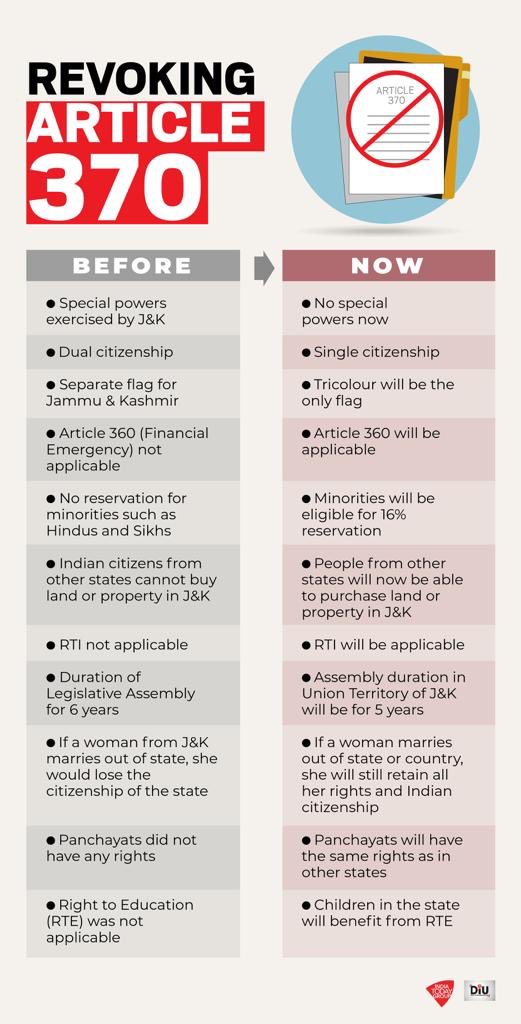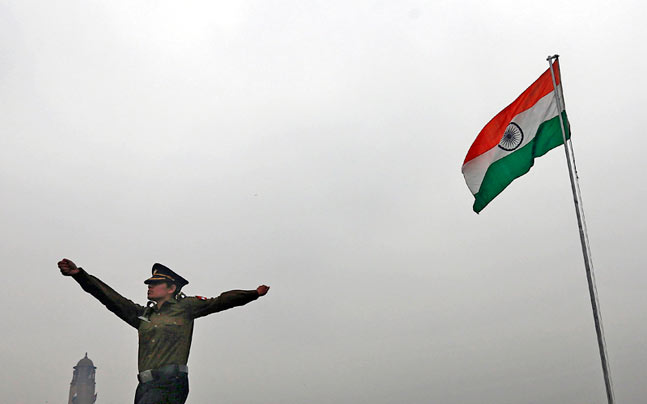August 5, 2019. Kashmir is finally free. Free to grow, free to make a future. Having visited the kashmir valley more than twice , it is an incredibly emotional moment for me to see this happening in my lifetime. I can proudly say kashmir belongs only to India and it is part of the same soil that I belong to.
Article 370 never gave Kashmiris freedom. It only created selfish leaders who created a terror filled society and robbed Kashmiri youth of opportunity. It is finally time for it to go. Anyone objects, tell them loudly: One Country, One System
HISTORY OF KASHMIR AND INDIA
At the time, the princely state of Jammu and Kashmir, which had a majority Muslim population, was governed by maharaja Hari Singh, a Hindu. Unlike most of the princely states which aligned themselves with one nation or the other, Singh wanted independence for Kashmir. To avert pressure to join either new nation, the maharaja signed a standstill agreement with Pakistan that allowed citizens of Kashmir to continue trade and travel with the new country. India did not sign a similar standstill agreement with the princely state.
As partition-related violence raged across the two new nations, the government of Pakistan pressured Kashmir to join it. Pro-Pakistani rebels, funded by Pakistan, took over much of western Kashmir, and in September 1947, Pashtun tribesmen streamed over the border from Pakistan into Kashmir. Singh asked for India’s help in staving off the invasion, but India responded that, in order to gain military assistance, Kashmir would have to accede to India, thus becoming part of the new country.
Singh agreed and signed the Instrument of Accession, the document that aligned Kashmir with the Dominion of India, in October 1947. Kashmir was later given special status within the Indian constitution—a status which guaranteed that Kashmir would have independence over everything but communications, foreign affairs, and defense.
What is Article 370?
Included in the Constitution on October 17, 1949, Article 370 exempts J&K from the Indian Constitution (except Article 1 and Article 370 itself) and permits the state to draft its own Constitution. It restricts Parliament’s legislative powers in respect of J&K. For extending a central law on subjects included in the Instrument of Accession (IoA), mere “consultation” with the state government is needed. But for extending it to other matters, “concurrence” of the state government is mandatory. The IoA came into play when the Indian Independence Act, 1947 divided British India into India and Pakistan. For some 600 princely states whose sovereignty was restored on Independence, the Act provided for three options: to remain an independent country, join Dominion of India, or join Dominion of Pakistan — and this joining with either of the two countries was to be through an IoA. Thus through IOA , Jammu and Kashmir joined India.
In simple words , the implications of Article 370 before and after are :

Now we come to some of the most complex parts of this historic decision and try to unfold them legally, constitutionally and morally.
First, what is to be taken into consideration here is that Instrument of Accession(IOA) and Article 370 are two different things! If one can understand this difference then the confusion is almost clear. Through Instrument of Accession , the state of Jammu and kashmir has permanently been integrated as a part of India therefore nobody can take it away from India, not even the elite political families of Kashmir as they have been claiming to do so since a long time and reaping political benefits over false claims and creating fear in the mind of local people over the years. On the other hand Article 370 was drafted few years later after the IOA was signed to give special status to Jammu and kashmir and give special autonomy.
Now this Article 370 has been done with by the presidential order and this “special status’, ‘temporary provision”, “special Autonomy” whatever one might want to call it no longer applies to Jammu and Kashmir. Therefore it must be noted that it is absolutely crystal clear that Jammu and kashmir is, was and will be a part of India through IOA and not Article 370.
Secondly, Whether the consent of Jammu and kashmir Assembly is required to abolish Article 370? Here is the actual wordings of Article 370:
Article 370 of the Constitution of India
1) Notwithstanding anything contained in this Constitution,—
- (a) the provisions of article 238 shall not apply now in relation to the state of Jammu and Kashmir;
- (b) the power of Parliament to make laws for the said state shall be limited to—
- (i) those matters in the Union List and the Concurrent List which, in consultation with the Government of the State, are declared by the President to correspond to matters specified in the Instrument of Accession governing the accession of the State to the Dominion of India as the matters with respect to which the Dominion Legislature may make laws for that State; and
- (ii) such other matters in the said Lists as, with the concurrence of the Government of the State, the President may by order specify.
Explanation: For the purpose of this article, the Government of the State means the person for the time being recognized by the President on the recommendation of the Legislative Assembly of the State as the Sadr-i-Riyasat (now Governor) of Jammu and Kashmir, acting on the advice of the Council of Ministers of the State for the time being in office.
- (c) the provisions of article 1 and of this article shall apply in relation to that State;
- (d) such of the other provisions of this Constitution shall apply in relation to that State subject to such exceptions and modifications as the President may by order specify:
- Provided that no such order which relates to the matters specified in the Instrument of Accession of the State referred to in paragraph (i) of sub-clause (b) shall be issued except in consultation with the Government of the State:
- Provided further that no such order which relates to matters other than those referred to in the last preceding proviso shall be issued except with the concurrence of that Government.
(2) If the concurrence of the Government of the State referred to in paragraph (ii) of sub-clause (b) of clause (1) or in the second provision to sub-clause (d) of that clause be given before the Constituent Assembly for the purpose of framing the Constitution of the State is convened, it shall be placed before such Assembly for such decision as it may take thereon.
(3) Notwithstanding anything in the foregoing provisions of this article, the President may, by public notification, declare that this article shall cease to be operative or shall be operative only with such exceptions and modifications and from such date as he may specify:
Provided that the recommendation of the Constituent Assembly of the State referred to in clause (2) shall be necessary before the President issues such a notification.
Now when the Home minister spoke in the Rajya Sabha, he citied the (3) clause of Article 370, thereby making Article 370 more or less null and void via a “Presidential order”. This point is very important as a presidential order is an executive order and not a legislative one. Also as there is currently no state government in Jammu and kashmir, the person who represents the state is the Governor himself via Governor’s rule that is in place. Therefore the Central government merely needed to take the permission of the Governor to imply clause (3) in this place. This is what you call a political masterstroke.Hence it is completely within the limits of Constitution and totally applicable. Therefore as a conclusion , the concurrence of state assembly is not required.
One more issue that is complicated is the bifurcation of Jammu and kashmir. The earlier state is now divided into two separate Union territories that is one UT of Jammu and Kashmir with legislature (like that of Delhi) and other UT of Ladakh region without a legislature. This is of very much significance especially to the Ladakh region as it has been in the shadows of Kashmir valley region over the years and been facing discriminations in terms of development, representations etc. Also now that Jammu and kashmir will be an UT with legislature, it will have its own MLA’s and also there will be a direct control of central government in the form of Lt Governor. This is also done to further increase the powers of Centre over the region and therefore give it more stability and accountability
To conclude, some of the things that needs to be looked upon on a priority basis now are the reintegration of Kashmiri pandits, bringing Investment and development to Kashmir and most importantly keeping the ‘Kashmiriyat’ alive along with the ‘Insaniyaat’. Jai Hind



